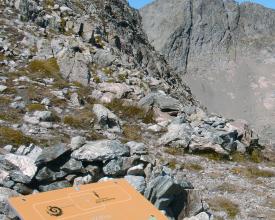Parc européen Marittime-Mercantour : comment la conservation transfrontalière à long terme peut conduire à une structure juridique de gestion commune

À partir de leur contiguïté territoriale et de leur patrimoine naturel et culturel commun, les deux parcs ont créé une zone protégée unique d'environ 1 000 km² de part et d'autre de la frontière franco-allemande. Un long processus de partenariat, d'abord généré par la nécessité d'une gestion commune de la faune et de la flore, a ensuite conduit au développement durable et à une identité visuelle commune. Grâce à des projets de plus en plus intégrés, ils ont développé une vision commune et ont finalement créé une structure juridique commune conformément à une nouvelle réglementation de l'UE : GECT.
Impacts
Environnement : gestion commune de la population de bouquetins existante, réintroduction du gypaète barbu, suivi commun de la recolonisation naturelle du loup. Recherche scientifique transfrontalière, telle que l'inventaire biologique tous taxons (All Taxa Biological Inventory ATBI). Développement durable : réseau de sentiers, système de signalisation commun, tourisme durable (les parcs ont signé conjointement la Charte européenne du tourisme durable d'EUROPARC et ont présenté une stratégie et un plan d'action communs pour l'ensemble de la zone transfrontalière). Financement : Plan transfrontalier intégré Marittime-Mercantour (PTI), 10 millions d'euros grâce au programme européen Interreg ALCOTRA. Il s'agit de 6 projets thématiques intégrés : recherche scientifique et conservation de la nature, identité culturelle, gestion territoriale, éco-tourisme, mobilité douce et éducation à l'environnement. Ce plan a également stimulé l'implication de la communauté locale. Gouvernance : en mai 2013, le GECT Marittime/Mercantour a été officiellement créé, donnant naissance au premier parc européen et produisant de nouveaux objectifs ambitieux tels que l'inclusion dans la liste du patrimoine mondial de l'UNESCO. Cette idée implique désormais cinq autres zones protégées italiennes, créant ainsi une étendue continue comprenant toutes les successions écologiques de la plus haute montagne à la mer Méditerranée. Inscrit en 2013 sur les listes indicatives italienne et française de l'UNESCO en tant que bien naturel transfrontalier sous le nom de "Alpes de la mer".


